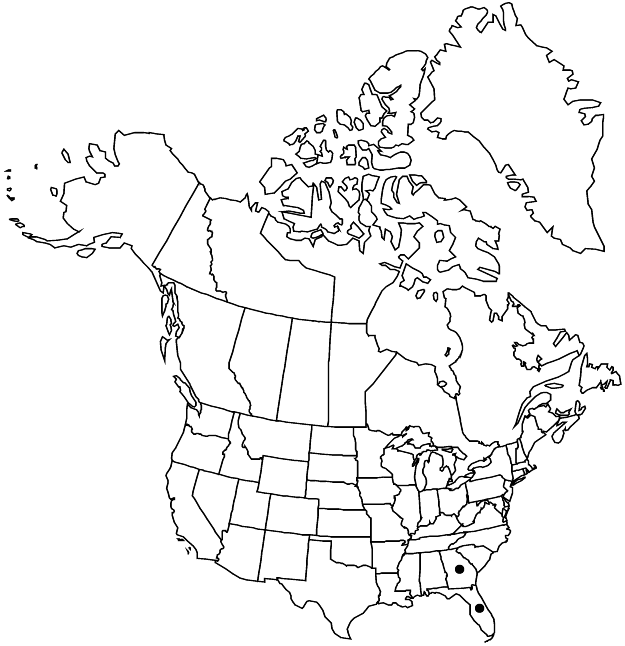Paronychia rugelii
Fl. South. U.S. ed. 3, 397. 1897.
Plants annual; taproot filiform to slender. Stems erect, dichotomously branched, 5–50 cm, retrorsely to spreading- pubescent throughout. Leaves: stipules ovate-lanceolate, 2–6 mm, apex acuminate, entire; blade linear to linear-oblanceolate or linear-oblong, 3–25 × 1–2.3 mm, herbaceous, apex ± acute, moderately antrorsely puberulent. Cymes terminal and lateral, 15–50+-flowered, often forming large, congested clusters 5–30 mm wide. Flowers 5-merous, cylindric to narrowly lanceolate, with enlarged hypanthium and calyx cylindric to tapering distally, 2.3–3.5 mm, pubescent mostly proximal with hooked or usually straight hairs, sometimes with scattered straight hairs distally; sepals flecked or solid red-brown, white distally, midrib obscure, linear-lanceolate, 1.5–2 mm, papery, margins white, 0.1–0.2 mm wide, papery, apex terminated by mucro, hood obscure, narrowly rounded, mucro short-conic, ca. 0.1 mm, glabrous; staminodes filiform, widening proximally, 0.5–0.6 mm; style 1, cleft in distal 1/10. Utricles broadly ellipsoid to ± globose, 0.5–0.7 mm, smooth, glabrous.
Phenology: Flowering late spring–fall.
Habitat: Woodlands, fields, clearings, roadsides, waste places
Elevation: 0-200 m
Distribution

Fla., Ga.
Discussion
Of conservation concern.
Selected References
None.